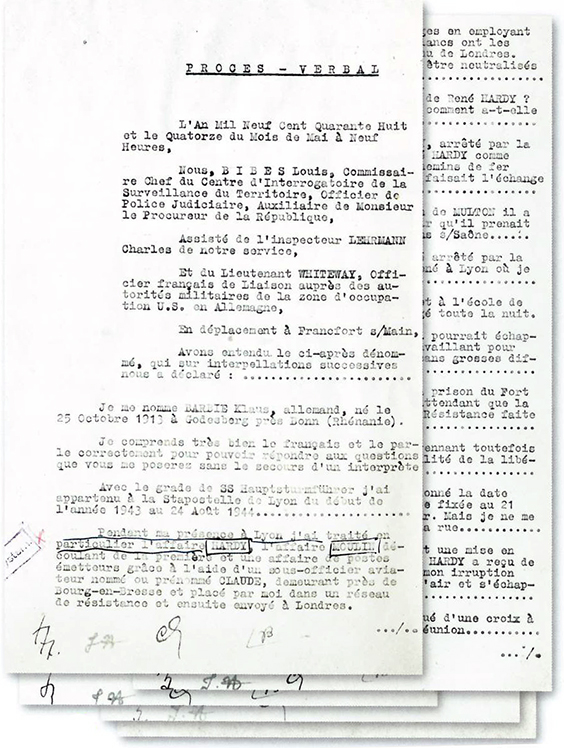From Klaus Barbie to Klaus Altmann
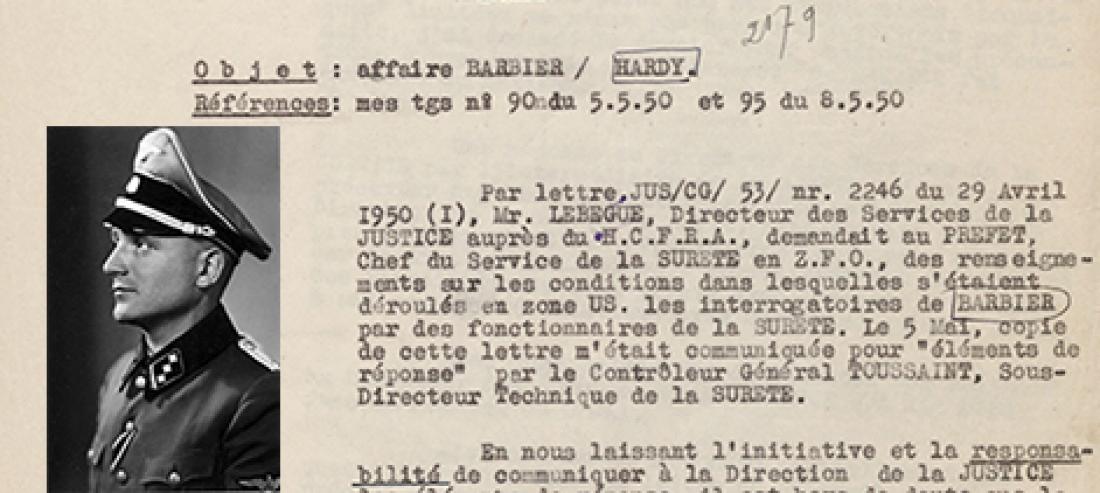
In the national memory, Klaus Barbie has two faces. From the Occupation to the 1970s, he was the man who decapitated the French Resistance by arresting Jean Moulin on 21 June 1943. Between 1970 and 1980, he was seen more as a cog in the Final Solution in France, who had deported thousands of Jews from France, including the children of the Izieu children's home, a crime against humanity for which he was finally tried and condemned in 1987.
On his own, Barbie symbolises the evolution in representations of the past, from the post-war patriotic cult to the contemporary centrality of the Holocaust. But originally Klaus Barbie was just an officer among many others of the SIPO-SD, the police of the Third Reich, whose role throughout occupied Europe was to repress opposition and resistance and persecute Jews.
Born in 1913 in Bad-Godesberg, Klaus Barbie was the son of rural Catholic school-teachers. His father, injured at Verdun, a violent alcoholic, died in 1933, preventing Barbie from pursuing theological studies. He signed up for the Hitler Youth and, the same year, was given his first employment in the Reichsarbeitsdienst, the obligatory labour service which replaced military service, still prohibited at the time. In 1935, very young (and very early), he was recruited to the Sicherheitsdienst (SD), the Nazi Party's security service, and posted to the Düsseldorf region under Helmut Knochen, the former deputy chief of the SIPO-SD in occupied France. In 1937, he joined the Nazi Party, becoming an activist and attracting the attention of his superiors.
”The butcher of Lyon”
During the May 1940 offensive, he was posted to the Amsterdam Einsatzkommando charged with identifying enemies and anti-Nazi refugees. In 1942, he was sent to the Gex region of France to monitor clandestine crossings into Switzerland. After 11 November 1942 and the invasion of the southern zone, he joined section IV of the Lyon SIPO-SD (the Gestapo), taking charge of the section shortly afterwards and becoming the strongman of the Lyon SIPO-SD, which was led by Werner Knab. He was responsible for ”Jewish questions” and the fight against the resistance. His skill, his ferocity in interrogations and the fear he inspired earned him the nickname ”the butcher of Lyon”. On 21 June 1943, through efficient tracking and the carelessness of several resistance agents (see slideshow), he captured Jean Moulin, one of the most important Resistance leaders, whom he tortured and left for dead (see ”Bad news” from France). He continued his activities until just before the Liberation, including the pursuit of Jews, liquidating the Lyon office of the Union générale des israélites de France (UGIF, the Union of French Jews) on 9 February 1943, deporting 44 Jewish children and seven adults from the Izieu children's home on 6 April 1944 and organising the last convoy (650 detainees) leaving France for Auschwitz on 11 August 1944. In all, he was responsible for the torture, deportation and murder of several thousand people.
A well-protected fugitive
In August 1944, he managed to return to Germany and went into hiding. In 1946, he was arrested by the British but succeeded in escaping. In 1947, he was identified by the American counter-espionage service (the Counter Intelligence Corps or CIC), which hesitated between arresting a wanted war criminal and accepting his offer of services. He proposed his experience of intelligence and his anti-communist fervour. Like many former SS members, Barbie was finally recruited as an informer and worked for the CIC from April 1947 to March 1951. This meant that despite repeated attempts (see slideshow) the French authorities were unable to bring him before a military tribunal, although he did appear before French magistrates in May and July 1948. These practices were part of the context of the emerging Cold War and the rivalries between the Allied intelligence services, all of which - including the Soviets - had recourse to the services of ”useful” former Nazis. They were revealed and officially admitted decades later, after Klaus Barbie's capture in 1983.
Klaus Barbie was nevertheless condemned to death for war crimes twice, in 1952 and 1954, but in absentia, as he had taken refuge in Bolivia in 1951 thanks to the CIC, which gave him a new identity in the name of Klaus Altmann. He remained there until 1983, advising the region's dictatorial regimes.
Condemned for crimes against humanity
In February 1972, a television interview in La Paz with the French journalist Ladislas de Hoyos and an intervention by Beate Klarsfeld and Ita-Rosa Halaunbrenner, who lost her husband, eldest son and two daughters because of Klaus Barbie, drew international media attention and changed the nature of the case: the former SS man, despite his protection, was identified as an unpunished perpetrator of the Holocaust in France.
In 1983, following the installation of a democratic regime in Bolivia and thanks to the actions of Robert Badinter, Serge and Beate Klarsfeld and Régis Debray, Barbie was captured and expelled to French Guiana, from where he was brought back to Lyon and charged with crimes against humanity. Despite a degree of controversy between former resistance members and deported Jews, and thanks to hundreds of witness statements, his trial constituted a turning point in the memory of the Occupation. ”It was war, and the war is over,” Klaus Barbie declared at the end of the hearings. And yet he was never either a soldier or a warrior, but an efficient component of a political police force responsible for the deaths of thousands of people across Europe.
Henry Rousso
Historian, research director at the CNRS,
at the Institut d'histoire du temps présent (Institute of Present Day History)
FOR MORE INFORMATION
René Hardy's file, including Klaus Barbie's interrogation report, will be classified under the number GR 28 P 9.
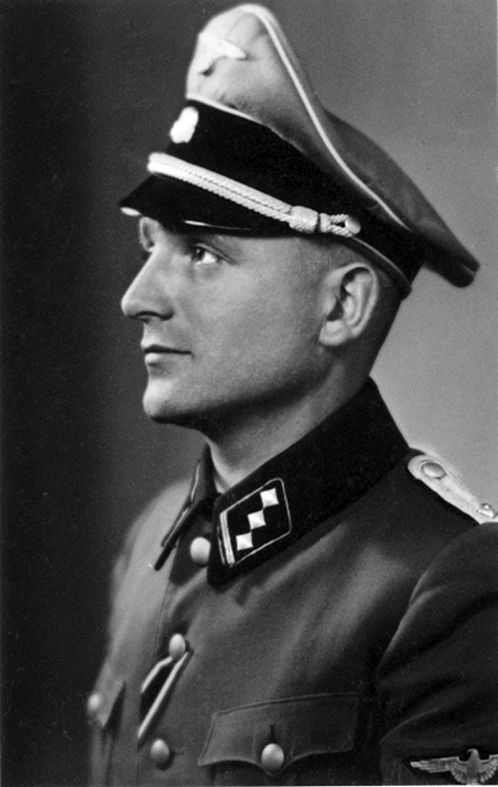
Klaus Barbie en uniforme de capitaine de la SS, sans date.
© Bundesarchiv
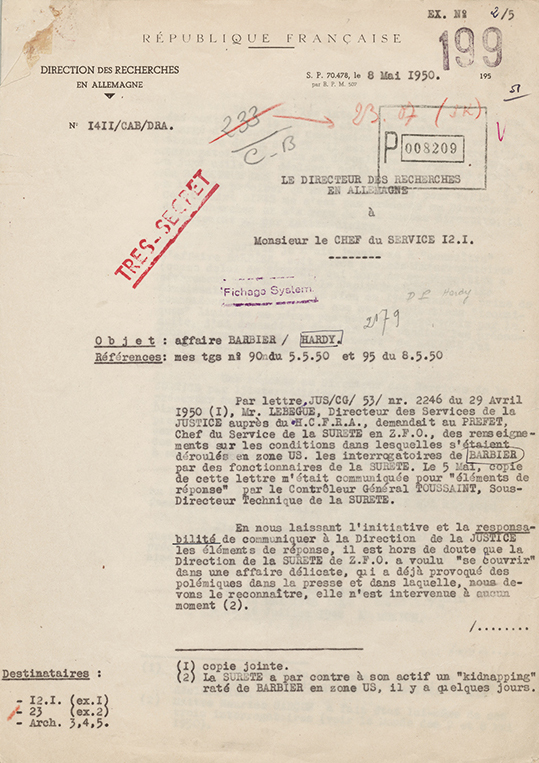
Recherche de renseignements sur l'affaire Barbie, 8 mai 1950, p. 1
© SHD
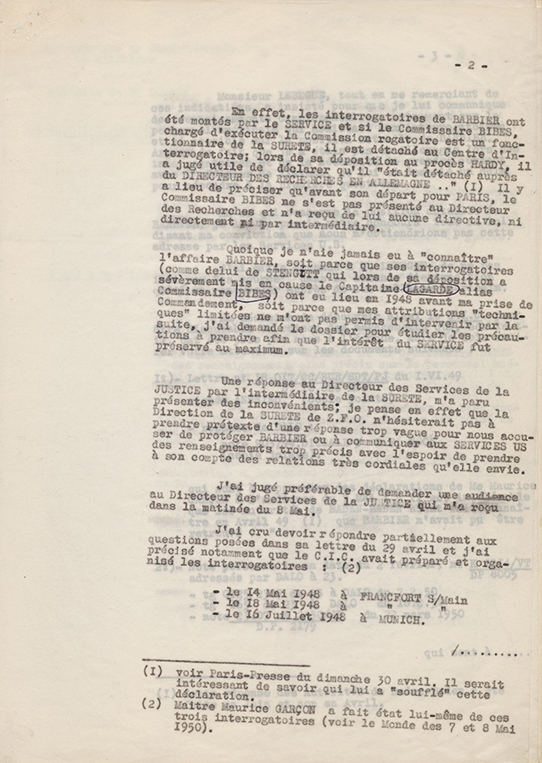
Recherche de renseignements sur l'affaire Barbie, 8 mai 1950, p. 2
© SHD
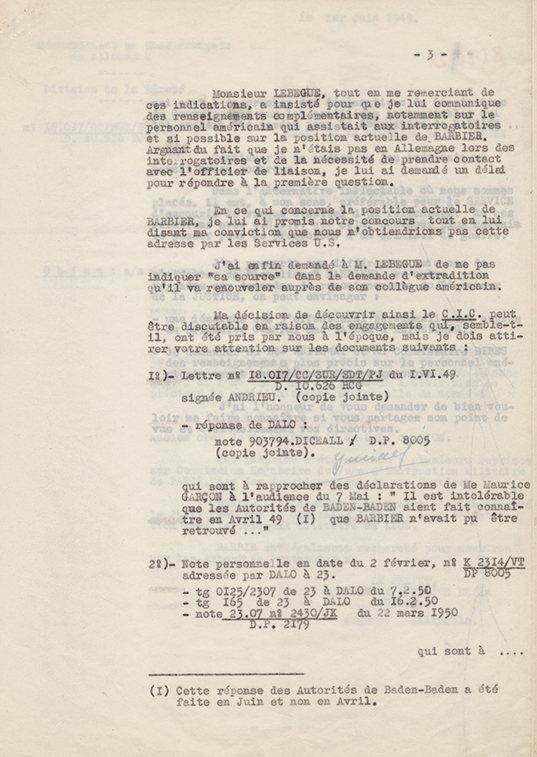
Recherche de renseignements sur l'affaire Barbie, 8 mai 1950, p. 3
© SHD
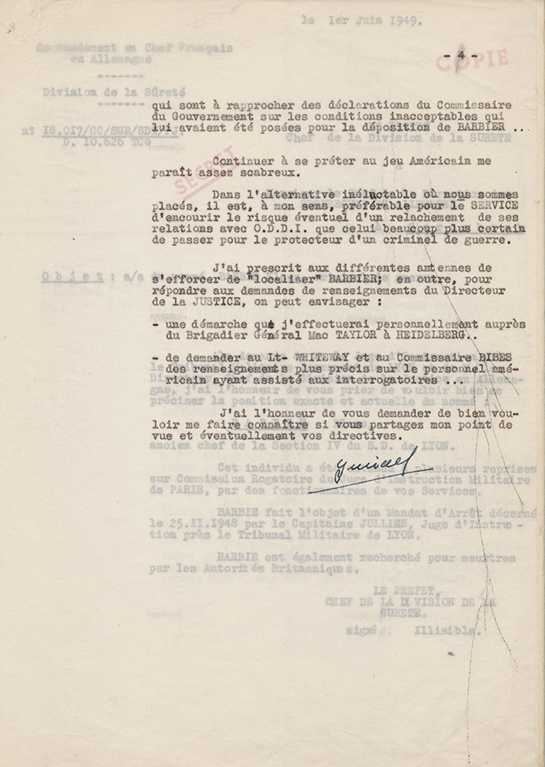
Recherche de renseignements sur l'affaire Barbie, 8 mai 1950, p. 4
© SHD
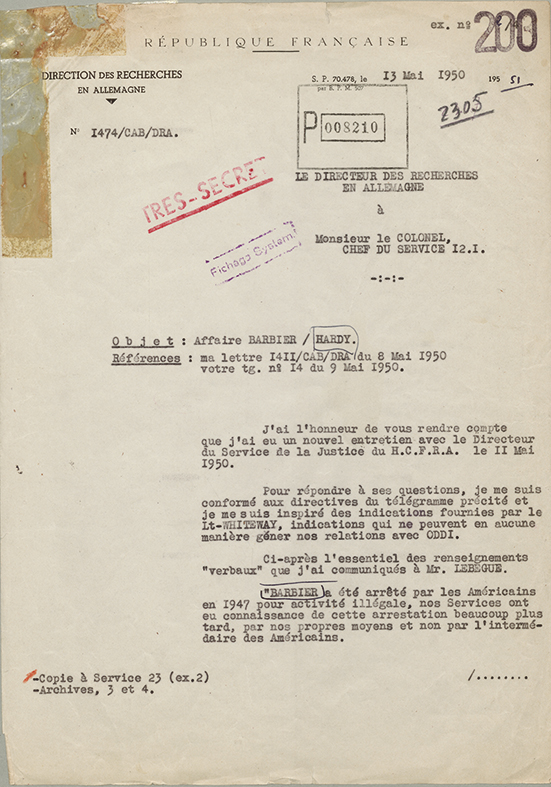
Échanges d'informations entre les services secrets français et américains sur Klaus Barbie, 13 mai 1950, p. 1.
© SHD
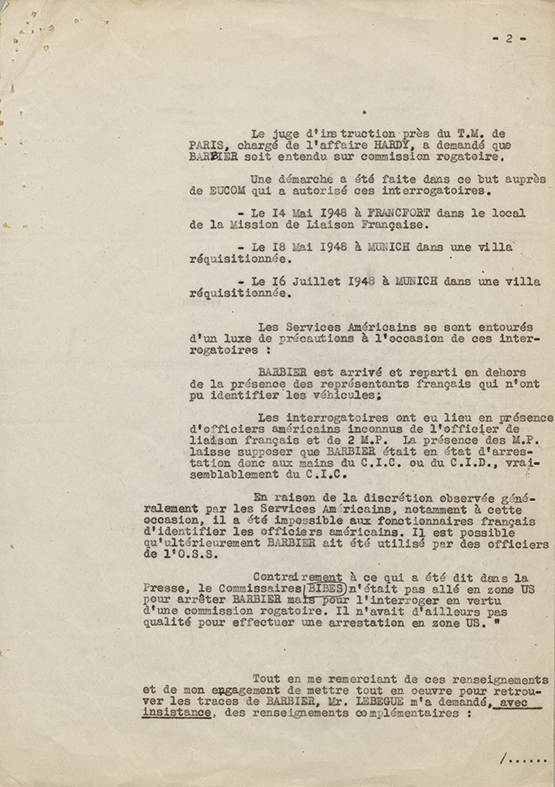
Échanges d'informations entre les services secrets français et américains sur Klaus Barbie, 13 mai 1950, p. 2.
© SHD
